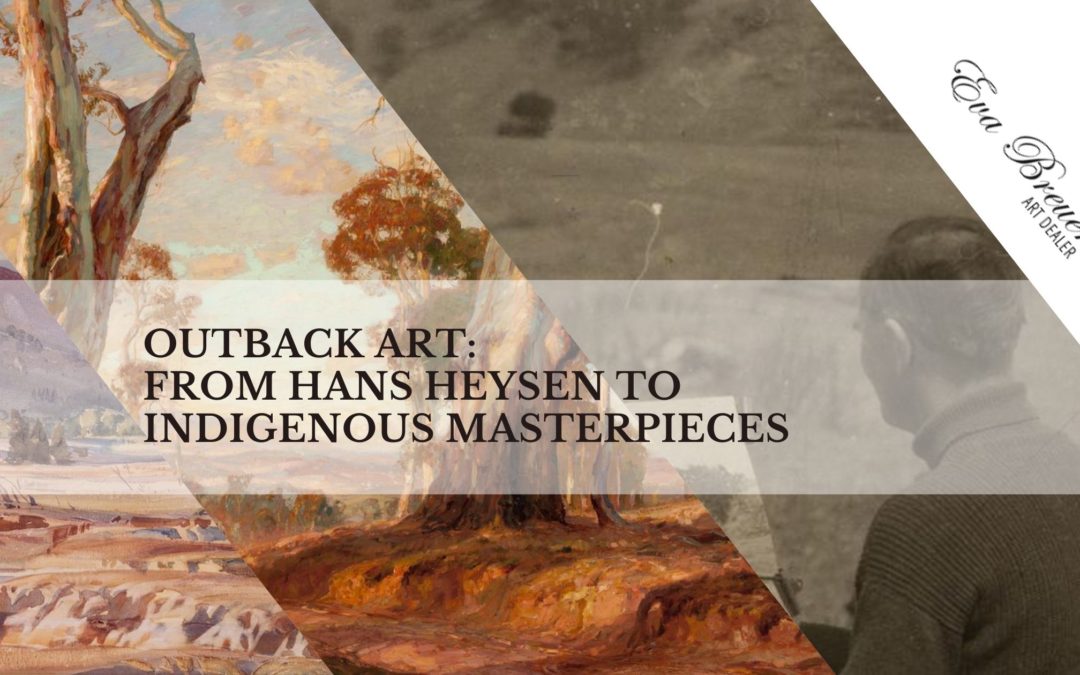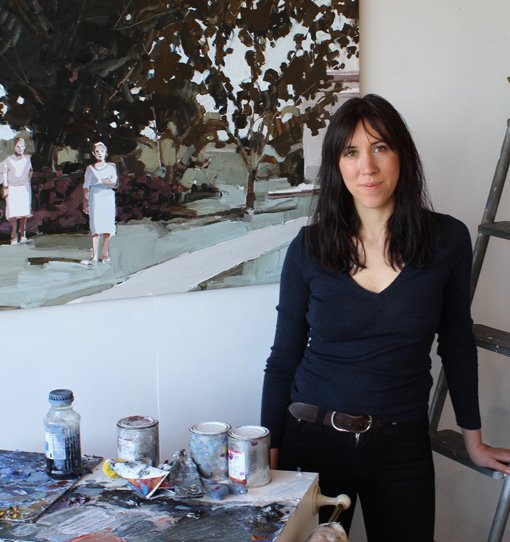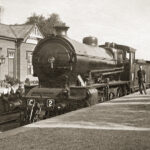Heysen’s artwork is highly traditional in South Australia inspired Hans Heysen an outback art from Hans Heysen to indigenous masterpieces.
He was very fortunate with patrons and at only the beginning of his career as an artist, four prominent Adelaide businessmen were so impressed by his enthusiasm that they agreed to sponsor his studies in Europe, in place of the right to sell whatever he painted abroad. The Madigan Line valley painted by Sir Hans Heysen also adorned with Aboriginal petroglyphs. Later he sold artworks to the State galleries in Sydney, Melbourne, and Adelaide and carried out commissions for prominent patrons such as Dame Nellie Melba and the Governor of Victoria.
Red Gold 1913
In Red gold 1913, Heysen depicted two great old trees at Hahndorf, with a worn road between and homeward cattle, distant hills, and a colored light on the clouds and air and trees. The view is from the Hahndorf-Mt Barker Junction Road, but it is painted with some artistic license. Mt Barker in the background could not be seen from the artist’s vantage point. The mature, majestic gums suggest triumphal columns, basking in warm golden light at the close of day.
The Three Sisters of Aroona 1927
One morning during his visit to the Flinders Ranges in 1927, Heysen rose before sunrise, as he always did, and was spell-bound, electrified. Dawn was breaking over the ranges and the long line of hills quivered in the morning light. As sunrise approached, the caps gleamed and flared, and color and shadow ran down their long slopes and into the gullies between.
He had not been so excited for years, and he worked feverishly to get the essentials down before the scene changed and the impact weakened in the growing light. This was the first of many sketches he made of the Three Sisters of Aroona. In watercolors such as The Three Sisters of Aroona 1927, he captured the sharp profiles of the hills, the clarity of the light, and the intense colors. But more significantly he saw this landscape as being dateless, frozen in time. And he captured its haunting silence.
In the Flinders – Far North 1951
In the Flinders–Far North is an example of Heysen combining the two great motifs of his oeuvre in one composition: the Australian gum tree and the view of the Flinders Ranges and Australian frontiers will continue to inspire artists. The mightiness of the gum dominates this work, set deep in the arid amber and lilac landscape of the Ranges. The work was commissioned by the Commonwealth Government to celebrate the fiftieth anniversary of the Federation and was displayed in the Australian Embassy in Paris for many years.
In discussing the impact of the Flinders Ranges on his work and the contrast it provided with the landscape of his hometown of Ambleside also known as Hahndorf, South Australia, Heysen said:
“I go to the north, to the Flinders, where I find an entirely new landscape, quite divorced from anything that surrounds me here at Ambleside, and it gives me the fresh impulse to create the bare bones of our landscape in South Australia. It is an old country, very old, and it is that very age you feel in your surroundings, that spaciousness and those rugged peculiar shapes in the hills, that fascinate one, and the dry quality of the color and the infinity of the vast distances have a fascination which this country surrounded by foliage and trees doesn’t give you. You feel freer”.







